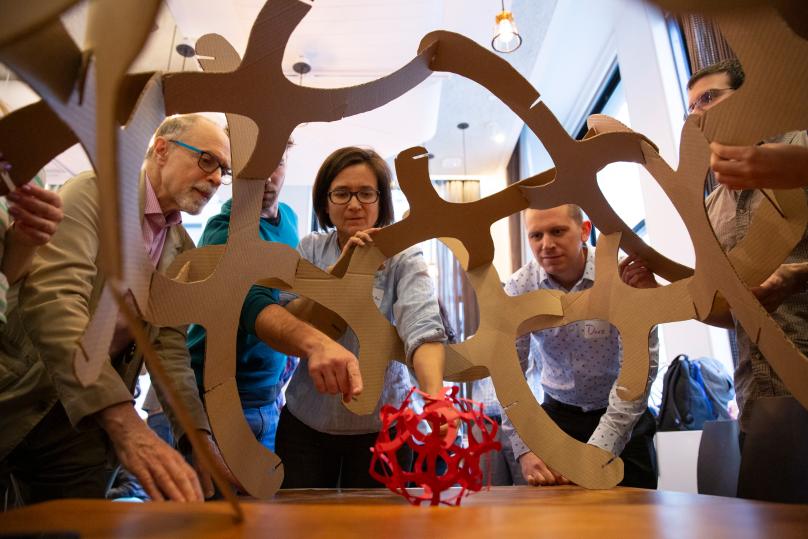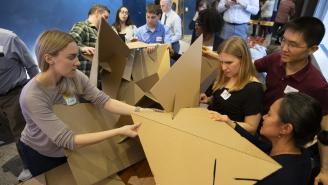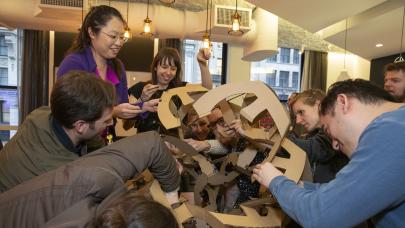
"It's important for teachers to inhabit the thinking space of students in order to more effectively teach those skills in our classrooms.”

Teachers often decorate their classrooms with language, yet using visuals can spark curiosity and enthusiasm for the subject. At April's MƒA Thursday Thinks event, Author and Sculptor Dr. George Hart led over 100 MƒA teachers in 10 different hands-on activities, where they worked together to construct aesthetically impactful geometric objects out of cardboard sheets. From zonohedron domes to catenary arches, these creations served as physical testaments to MƒA teachers’ teamwork and communication – skills also necessary for students who work on their own constructions when brought into the classroom as centerpieces for mathematical conversation.
MƒA Master Teacher Daniel Lao, who makes it a priority to register for Dr. Hart’s MƒA courses and had the pleasure of introducing him for this event, said he witnessed collaboration between MƒA teachers on a scale and format he had not yet seen before. “Teachers worked side by side, many who had yet to meet prior, and cheered each other on as they marveled at the creative engineering involved in the design process,” said Daniel. “We noticed symmetries, patterns, and balance, wondered about applications to our own classrooms, and, most importantly, felt a sense of beauty emanating from these mathematical structures.”
These large constructions act as low-cost activities that can be made from scrap or donated cardboard, yet they have a huge visual influence and can get students to see math in new ways. Attendees were eager to bring back the work to their schools in a variety of forms, from displays in math clubs and fairs to lessons in geometry and advisory classes. Daniel feels authentic MƒA experiences like these bring a deeper understanding of what it means to be mathematically engaged and what it looks like to exhibit mathematical thinking processes. “By design, none of the constructions were completely straightforward and all required participants to struggle and persevere on their way to completion. It's important for teachers to inhabit the thinking space of students in order to more effectively teach those skills in our classrooms.”
